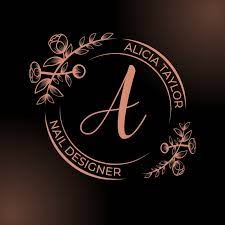The Art of Logo Design
Logo design is a crucial aspect of branding and visual identity for any business or organisation. A well-crafted logo serves as a symbol that represents the values, mission, and personality of a brand. It is often the first point of contact between a company and its audience, making it essential to create a memorable and impactful design.
Key Elements of Effective Logo Design
When creating a logo, several key elements need to be considered:
- Simplicity: A simple and clean design is more likely to be easily recognisable and memorable.
- Relevance: The logo should reflect the nature of the business or organisation it represents.
- Memorability: A good logo should be distinctive and leave a lasting impression on viewers.
- Versatility: The logo should work well across different mediums and sizes without losing its impact.
- Timelessness: Aim for a design that will remain relevant and effective for years to come.
The Design Process
The process of creating a successful logo involves research, brainstorming, sketching, refining, and finalising the design. Designers often start by understanding the client’s brand identity, target audience, values, and competitors to inform their creative decisions.
The Impact of Logo Design
A well-designed logo can have a significant impact on how a brand is perceived by its audience. It can convey professionalism, trustworthiness, creativity, or any other desired trait. Logos are powerful visual assets that can help differentiate a brand from its competitors and build brand recognition over time.
In Conclusion
Logo design is both an art and a science that requires creativity, strategic thinking, and attention to detail. A carefully crafted logo has the potential to elevate a brand’s image and make a lasting impression on customers. By understanding the principles of effective logo design and investing in quality craftsmanship, businesses can create logos that stand the test of time.
The Process of Creating Your Personal Logo: A Step-by-Step Guide
Exploring the Seven Diverse Forms of Logo Design
4. Utilising Microsoft Word
- Can I design my own logo for free?
- How do I design my own logo?
- What are the 7 types of logo design?
- Can I design a logo in Word?
- What are the 7 elements of logo?
Can I design my own logo for free?
When considering whether to design your own logo for free, it is important to weigh the pros and cons. While there are many online tools and resources available that allow you to create a logo at no cost, it is essential to keep in mind the potential limitations of such DIY approaches. Designing a logo requires a deep understanding of branding principles, graphic design techniques, and the ability to create a visually appealing and memorable symbol that accurately represents your brand. While designing your own logo can be a cost-effective option, it may not always result in a professional-looking design that effectively communicates your brand’s identity and values. In some cases, investing in the expertise of a professional designer or agency can lead to a more impactful and successful logo that resonates with your target audience.
How do I design my own logo?
Designing your own logo can be a rewarding creative process that allows you to craft a visual representation of your brand identity. To design your own logo, start by brainstorming ideas and concepts that reflect the essence of your business or organisation. Consider your target audience, values, and unique selling points to guide your design choices. Sketch out rough drafts and explore different shapes, colours, and fonts to find a design that resonates with your brand. Utilise design software or online tools to bring your concept to life digitally. Remember to keep the design simple, memorable, and versatile for optimal impact across various platforms. Seek feedback from peers or professionals to refine and finalise your logo before implementing it as a key element of your branding strategy.
What are the 7 types of logo design?
When it comes to logo design, understanding the different types of logos can help businesses make informed decisions about their visual identity. The 7 types of logo designs commonly recognised in the industry are: Wordmark logos, Lettermark logos, Brandmark logos, Combination logos, Emblem logos, Abstract logos, and Mascot logos. Each type has its own unique characteristics and is suited to different branding strategies. From simple word-based designs to intricate illustrations or characters, choosing the right type of logo can play a crucial role in effectively communicating a brand’s message and values to its audience.
Can I design a logo in Word?
Designing a logo in Word is possible, but it may not be the most effective or professional approach. While Word offers basic design tools like shapes, text boxes, and colours, it lacks the advanced features and flexibility found in dedicated graphic design software. Logos created in Word may appear simplistic and limited in terms of creativity and visual impact. To ensure a high-quality and unique logo that accurately represents your brand, it is recommended to use specialised graphic design tools or seek the expertise of a professional designer who can bring your vision to life effectively.
What are the 7 elements of logo?
When delving into the realm of logo design, it is essential to understand the seven key elements that form the foundation of a successful logo. These elements include simplicity, relevance, memorability, versatility, timelessness, uniqueness, and appropriateness. Each element plays a crucial role in shaping a logo that effectively communicates the identity and values of a brand while leaving a lasting impact on its audience. By carefully considering and incorporating these elements into the design process, designers can create logos that not only stand out but also resonate with viewers on multiple levels.
